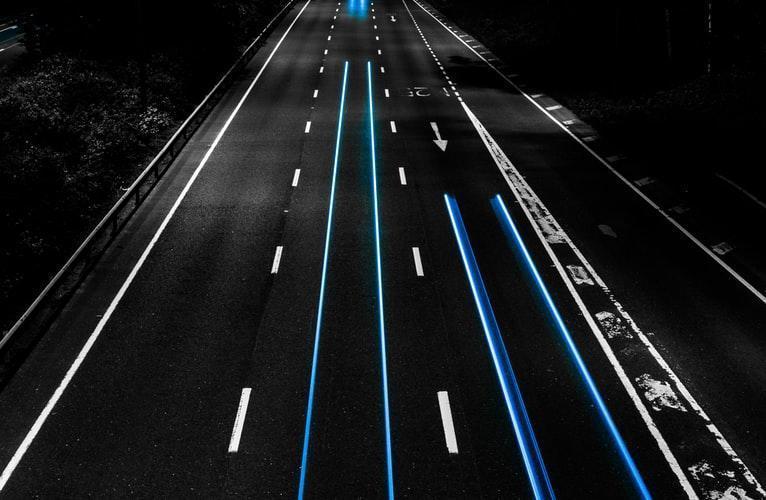The Covid-19 pandemic has laid bare a number of reckonings for our urban spaces and how we interact with them. A notably striking one has been with our carbon footprint. Global lockdowns in movement correlated with the single largest drop in carbon emissions since World War II—and reopening has seen a return to “business as usual” so fast that even climate scientists are startled. Now, cities worldwide are wondering how they can lock in the environmental gains made during the pandemic before they disappear.
So it appears more timely than ever to ask this question of Rio. How can the Cidade Maravilhosa—a city that has held a statured role in the sustainability debate, home to the first-ever global conference on the topic—craft a low-carbon future? Specifically, let’s focus on the transportation sector, which is now one of the largest contributors of CO2 emissions globally (and steadily increasing). In the end, it was the drop in mobility, namely from air, freight and automobile travel, that led cities to see the cleanest air in a generation.
Using the backcasting approach to scenario analysis—where we project a future scenario and work back through the steps necessary to attain that scenario—this article will frame alternative futures for Rio, sustainable and unsustainable, examining both the key drivers of change and the uncertainties affecting transport here over the next 30 years. Ultimately, it will propose a future vision for low-carbon transport in the city by 2050 and discuss the potential policy routes available to achieve those goals.
Definitions and Considerations
According the Intergovernmental Panel on Climate Change’s (IPCC) definition, “sustainable” refers to a stabilization of the carbon dioxide concentration in the atmosphere at 450 parts per million (ppm), or lower than 1,000 Gigagram (Gg) of carbon dioxide equivalent (CO2e). Given relatively stable trends, let us assume that the city’s population grows from around 6.5 million in 2020 to approximately 7 million by 2050. According to the United Nations, Rio’s metropolitan region will climb faster, from 13 million in 2020 to 14 million in 2030, and perhaps to over 16 million by 2050—holding significant implications for transport.
Rio’s transport here is defined as all transport generated by the city’s residents, including journeys made both domestically and internationally, and freight transport. Nearly half of Brazil’s carbon emissions are caused by land use, which, after years of decline, are poised to rise due to increased deforestation. But in Rio, energy consumption made up 79% of the 20.56 million tons of carbon released into the atmosphere in 2017; of that, transport contributes nearly 36%, or 7,371 Gg of CO2e. “On road” traffic makes up about three-quarters of transport emissions, with aviation contributing around a quarter. Therefore, reducing passenger transport emissions is critical.
Using forecasts deployed by Jonas Åkerman and Mattias Höjer, our analysis acknowledges technology’s potential in reducing vehicular fuel intensity 35-80% by 2050, 40% in aviation, and 20-60% for freight. We have to distinguish also between the travel needed to reach a desired destination (derived), and the travel necessary to complete certain functions, like employment or groceries (structurally enforced). The latter is, of course, more difficult to change, but is by far the most significant: in Rio’s favelas, 49% of all trips are taken for work, 39% for study. In order to shape this travel, one has to look at geographic and functional accessibility, or the distances of the trips made; in Rio, the average trip to work is 17.74km, which takes about 52 minutes. The private car owner travels the farthest (22.1 km), and almost the longest (51 minutes), second only to bus riders (63 minutes). The highest potential for fuel efficiency is projected for short-distance car travel, but with growth expected in population and automobile sales (which we’ll get to below), it can be concluded that technology alone will not guarantee sustainability.
It is also worth providing context for transport in Latin America. In Rio, the automobile is the mode used for only 22% of transportation that occurs in the city. Yet Rio’s built form is still heavily car-centric, clustered around major urban highways, hillside-bored tunnels, and trafficked thoroughfares. Bus journeys, which make up 37% of modal share, can be arduous or unsafe; walking journeys, a quarter of trips made, involve crossing dangerous roads with little sidewalk space. As Brazilian transport planner Eduardo Alcântara Vasconcellos explains, for years, resources were predominantly dedicated to a car-driving minority rather than to public transport users. This is due to a range of historic factors in Latin America, he writes, including lack of political representation, scarcity of data, centralized power, economic constraints, and conservative transportation planning. As a result, services once available locally are now located farther apart, most conveniently accessed by car.
Transportation and Urban Inequality
Urban transport in Rio entails underlying issues of equity that may not exist to the same extent in a Western context. This distinction is crucial in whatever planning or policy prescriptions are made going forward. Under the technocratic administration of Mayor Eduardo Paes, the city marketed itself as addressing these inequities through several major transportation investments, including the introduction of a Bus Rapid Transit (BRT) network; an expansion of the cycling and cycle-hire network; new light rail services; and a fourth subway line with larger cars. However, commute times actually increased, the increase in modes being more of a marketing ploy than assurance of access (since numerous bus lines were cut, including direct access from lower-income areas to higher-income areas of the city).
The investments appeared to pay off in ridership: in 2010, the city had 2.3 million bus riders, 588,000 metro riders, and 499,000 tram riders; in 2018, there were 2.9 million, 661,000, and 598,000, respectively. However, it is unclear how much of this is an increase in individuals, since rather than taking a direct bus now multiple modes are required (hence why commute times increased).
The city’s 450 km of cycle lanes accumulated over the years (up from two in 1990), are an improvement, though the patchwork nature of those paths leads to significant gaps that cause many injuries and fatalities. For decades Avenida Atlântica and four other important roads are closed to car traffic on Sundays. Micro-mobility devices, like scooters, are now being deployed by private companies with city regulation. Today, in yet another generation of marketing ploys, conservative mayor Marcelo Crivella has pledged “fossil-fuel-free streets” with electric buses by 2030 and other traffic calming measures—but as with other pledges of his first administration, now coming to an end, little has been done, kicking responsibility once again to the next administration.
While the city’s overall transport emissions declined from 8.7 million tons in 2012 to 7.3 million in 2017, this may be due primarily to economic recession. Furthermore, the city government said that “the growth in the number of private cars” was a key driver behind a spike in overall energy consumption, without a major population change, from 8.7 million tons in 2005 to 17.9 million tons in 2012. Car ownership has grown from 1.3 million automobiles in 2001 to 2.2 million in 2019, encouraged by a burgeoning middle class and relatively low gasoline costs, according to the Brazilian Institute for Geography and Statistics (IBGE). Although still less than 1% of modal share, ownership of two-wheel mopeds is growing even faster, from 75,755 in 2001 to over 330,000 in 2019. An outsized ethanol-based “flex-fuel fleet” has helped offset emissions, but the rate of automobile growth still poses the most significant obstacle affecting transport over the next 30 years.
This key driver of change is, again, underlined by the structural enforcements of travel in Rio itself. Geographically, the city is difficult to cross, lying at the intersection of mountains, rainforest, and the Atlantic coast; its vastness is divided in four zones: North, South, West, and its downtown Centro, where half of the city’s jobs are concentrated. Unlike industrialized countries, where wealthier residents often live far away from city centers, Rio’s well-off are concentrated in the beachside South Zone, while low-income residents are increasingly pushed to the urban periphery. This segregation means that each day, millions trek to Centro for work, and more are expected with Greater Rio’s projected growth in the years ahead. Currently, at 52 minutes, Greater Rio has the highest home-to-work transit time of any metropolitan region in Brazil.
Assuming no interventions surface, the “Unsustainable Rio 2050” scenario projects that transport emissions will stay around 7,000 Gg of CO2e by 2030. Should the vehicular modal share hover near 25%, and 1 million people join the region’s population, 250,000 new cars and motorcycles on the road as well as continued air travel will largely offset fuel efficiencies of 35% to 40%, and 20%, respectively. Maintaining the current transport investments, as seen, will not have a significant impact. Greater Rio’s growth will raise automobile sales even higher by 2050, but new technology may limit emissions further to 5,000 to 6,000 Gg. Regardless, “business as usual” will continue.
The Road to Sustainability
Here’s the “Sustainable Rio 2050” scenario. To reiterate, Rio’s transport in 2020 makes up 35.9% of its emissions (7,371 Gg), with a modal share of 47.3% public transport users, including bus, subway, train, and light rail; walking, 27.24%; cars, 22.74%; and cycling, 1%. To arrive at a sustainable level, by 2050, Rio’s transport must equal only 0-5% of the city’s emissions (1,000 Gg or below; the IPCC-level sustainability). To reach this level, we need to arrive at a modal share of public transport users at 60%; walking, 30%; cycling, 5%; and cars, 5%. In the meantime, on path to this goal, by 2040, transport must make up 15% of emissions, with public transport at 57%; walking, 29%; cars, 10%; and cycling, 4%. And by 2030, Rio’s transport must make up 25% of emissions, with public transport at 55%; walking, 28%; cars, 15%; and cycling, 3%.
This progression would bring a low-carbon transport future within reach by 2050. So how can this happen?
At the national level: investing in renewable energy, creating an intercity train network, installing eco-efficient freight networks, and implementing an air fuel tax should be explored to lower emissions from domestic and international transport. Rio itself already has a number of effective strategies available to boost non-vehicular modal shares within city limits. Shifting the BRT system to rail and improving bus service would help lessen travel time for riders. Expanding the BRT system could help too. But planners cannot repeat the same mistakes made in the lead-up to the 2016 Summer Olympics, when the BRT system was developed into to lower-need areas of the West Zone, displacing many in its wake and leading them to live further, not closer, to employment (and thus ultimately spending more time in traffic). Rather, BRT would be more impactful in the populous North Zone, where commuting times can reach up to three hours due to backlogged roads.
Robust, continuous, cycling infrastructure and rental networks should extend to the North Zone as well, helping to connect commuters to a large and safe network, along with affordable “last mile” solutions. Further efforts should increase sidewalk space, and make streets safer to walk. Additional train, light rail, and metro lines should also be developed, with greater seamless integration between the systems fundamental. Only if wide-reaching transport improvements are made can the city consider a minimal congestion surcharge to enter the South Zone or Centro; otherwise, charging car owners in this context encroaches upon aforementioned issues of equity. Assuming streets are safe enough, a citywide push for low- or zero-emission mopeds—increasingly an optimal choice of getting around—could offset expected growth.
The growth in automobile ownership, however, cannot be tackled without accounting for travel purposes, destinations, and the modes available. Average trips, as seen, are longest by car, at 22.1 km. A prerequisite of “Sustainable Rio 2050” is a reduction in structured travel to 50% or lower by 2050. One area for guidance is employment: researchers found notable disparities in commutes exist between informal and formal jobs. In Rio, 55% of residents are informally employed, meaning they work without employment papers, or are self-employed. This population is more likely to live closer to work, and not drive, with a mean commuting distance of 6.4km; thus, 23.2% walk. Formal employees, meanwhile, have a mean commuting distance of 10.6km, with only 16% of journeys made on foot. While shifting economic headwinds can be difficult, maintaining helpful facets of informal employment—e.g. incentives for working near home; stimulus for self-entrepreneurship—should be implemented.
As shown, however, where wealth and opportunity are concentrated, spatial inequities result. The city must do more to address this imbalance in access, by creating local and regional nodes for employment, shopping, and leisure in the North and West Zones, such as are promoted in the “15-minute city” trend in urban planning. Residents should not need to travel three hours to obtain a well-paying job; 50% of public transport trips should not be for educational or health services. Vital community infrastructure, like parks and cultural amenities, should be widely dispersed, not only available to upper strata. The need for a car to access the most basic of resources should be minimized at all costs.
A case study can be found in Rio’s favelas, where residents travel significantly more by non-motorized modes than the rest of the city, according to a report from the Lincoln Institute. Most trips within the community are for leisure, shopping, and work, and only 3% of said trips are done by cars; when residents leave the favela, 50% of trips are for work. Recognizing that these neighborhoods have historically been marginalized, and steep slopes in some favelas discourage car use, the temporal nature of hyper-local services is worth mentioning here.
A sustainable future in Rio hinges on a dramatic rethinking of how the city functions for its residents and who the city is built for in the first place. Acknowledging trends in modal share and emissions, this article laid out the targets necessary to achieve a low-carbon transport future by 2050—as well as the realities of what would happen should inaction take hold—utilizing backcasting as its scenario analysis approach. The future, however, is not hopeless: Rio’s mobility has made inroads, and vehicular modal share remains lower than in many developed cities. But ‘pledges’ are threatened by rising car sales, population growth and haphazard transportation planning, which will hinder progress unless spatial inequities are addressed and comprehensive transportation planning undertaken.
Rio, like any great city, is unique, but characteristics applicable in developing contexts upend typical transport planning assumptions. Planners must recognize area-specific dynamics at play; too often, ideas imported from Asian or European contexts have failed, or exacerbated existing tensions. In the words of Vasconcellos, policies for low-carbon transport must be both environmentally conscious and equitable to realize a green future for Rio.
The world in quarantine offers a short glimpse of what that could look like, albeit under tragic pretences. Now comes the hard part
Link: https://www.rioonwatch.org/?p=57844
Source: https://www.rioonwatch.org

















Leave a Reply